Planetes: Complete Collection
Introduction
How about a little realism in your space sci-fi? You'd think there would be more of it around, given that mankind has been in space now for over 40 years. We have a good idea of how space travel works, the 'light the blue touch-paper and retire' moment of launch, zero-G and weightlessness, orbital trajectories, gravitational assists, and course changing burns. Above all, we know that there is no sound in space. We know all these things, yet in television and in movies, spaceships zip about like fighter planes, travel is immediate, artificial gravity rescues many a budget, and explosions are bloody loud and colourful. The thing is that conventional thinking dictates that realism is tedious and boring when it comes to space sci-fi. An eight month trip to Mars just won't cut it in a ninety minute movie, the silence of space can only be alleviated by classical music, no one cares about orbital manoeuvring thrusters, gyroscopic orientation or Newton's Third Law other than the most technical minded of science geeks.
Having seen 2001, A Space Odyssey, I tend to agree with them. We want our space travel fast and convenient, we want warp drive, jump gates, hyperspace, and we want our sci-fi enlivened with Jedi, Klingons, Xenomorphs and Death Stars. Animation offers us an opportunity that live action denies, the chance to do realistic space travel on the cheap. After all, it costs just as much to animate an astronaut in freefall, as it does to animate one standing on a deck. But the pace and requirements of the story dictate what we eventually see. I've seen two space anime that have a touch of realism about them, but ultimately in Cowboy Bebop, the space travel (with time saving warp gates) is just a means to advance the stories, and while Starship Operators may be more realistic than most, it still just transposes a submarine warfare genre to outer space. Conventional thinking tells us that a sci-fi about space travel that would be accurate and utterly realistic given our current state of knowledge would be slow, tedious, and unrewarding. Then Planetes comes and blows conventional thinking away.
It's 2075, and mankind has finally established a proper presence in space. No longer is Low Earth Orbit the limit to our exploration, and as well as scientific research, people live and work in space, exploiting the resources that a weary Earth depends on. There are people living on the moon, travelling the asteroids and beyond. But 116 years of space exploration has left its mark. All those satellites, launches, space stations and space walks have left a terrible legacy of debris. In Earth orbit now are millions of pieces of junk, ranging from the smallest screw, to defunct satellites the size of buses, all of them moving in random directions at up to 8 kilometres a second. At that velocity, a spaceship doesn't stand a chance, a fact made tragically clear in 2069, when a suborbital liner was hulled by piece of debris. Since then, a new space industry has arrived, garbage collection. Now all companies with a presence in space are required to have a debris section, a department whose purpose is to spend time out on EVA, cleaning up the mess and making space safer. It's not a glamorous job, considered a dead end in most company hierarchies, and it's downright dangerous to boot.
Technora Corporation's Debris Section is more downtrodden than most, laughingly derided as Half Section because it is always at half strength, it's where the company's deadbeats and mavericks end up. Rookie Ai Tanabe has always wanted to work in space, and she's excited to arrive at Technora Space Station 7, a large installation, with two contra-rotating wheels to provide gravity for its large contingent of employees. She's been assigned to Debris Section, but doesn't realise that it's the last button on the elevator. The eager young space cadet walks into utter mayhem. But as she begins her on the job training, she learns that the job that Debris Section does is honourable, and the people that she works with are a close-knit family. Among them are Hachirota 'Hachimaki' Hoshino, who dreams of owning his own spaceship, pilot Fee Carmichael, whose twenty a day habit requires special measures to sustain, and co-pilot Yuri Mihairokoh, who takes care of a menagerie of pets for station residents. Manager Philip Myers handles the paperwork in the office, and his bizarre second in command is would-be entertainer Arvind Lavie, while the sanest one of the lot is the temp, Edelgard Rivera. Together they boldly clean up where no one has cleaned before…
The 26 episodes of Planetes are presented across 6 discs.
Disc 1
1. Outside The Atmosphere
2. Like A Dream
3. Return Trajectory
4. Part Of The Job
5. Fly Me To The Moon
Disc 2
6. The Lunar Flying Squirrels
7. Extraterrestrial Girl
8. A Place To Cling To
9. Regrets
10. A Sky Of Stardust
Disc 3
11. Boundary Line
12. A Modest Request
13. Scenery With A Rocket
14. Turning Point
Disc 4
15. In Her Case
16. Ignition
17. His Reasons
18. Debris Section's Last Day
Disc 5
19. Endings Are Always…
20. Tentative Steps
21. Tandem Mirror
22. Exposure
Disc 6
23. Debris Cluster
24. Love
25. The Lost
26. And The Days We Chance Upon
Picture
It's Region 1, so the 1.78:1 NTSC transfer is free of any of the usual NTSC-PAL conversion artefacts. The image is sharp and clear throughout, and colours are consistent and strong. To balance that, playback on Region 2 equipment may elicit some aliasing (particularly when you pause), there may be a hint of judder perceptible, and you have to make do with a slightly lower resolution. It's swings and roundabouts really.
But the animation itself is sublime. This is a show that blends reality with sci-fi fantasy, looking to present a vision of the future that is wholly plausible. The character designs reflect this with a more realistic look. No large manga eyes here. The future is pretty much the modern day given an extrapolated makeover, and everyday objects are immediately recognisable. That's supplemented with the futuristic designs of space travel, HOTOL like earth to space liners, 2001 style space stations with spinning wheels to provide gravity through centripetal acceleration, and the sheer imagination that goes into vehicles that are built and work in space, never to enter atmosphere. There are one or two cute extrapolations that will probably become reality sometime in the future. One that I'm absolutely enchanted by is the faceless spacesuit. Working a job collecting orbiting debris is perilous enough, but a helmet with a glass visor would be suicidal. But in Planetes, the glass visors are protected by solid metal faceplates. Built in cameras capture the view outside and project it onto an internal screen, complete with heads-up display and telemetry. The animation itself is smooth and detailed, this is a show that has a substantial budget, and that shows on the screen, with the episodes at times approaching theatrical quality.
Sound
You have a choice between DD 2.0 Surround English and Japanese, with optional translated subtitles, as well as a signs only track. While my instincts as always are to go for the original Japanese track, I sampled the English dub and found it to be a fine adaptation, with the cast suited for the roles, and a sense of passion and enthusiasm for the project that some other lesser animes usually lack. The themes are excellent, with a particularly rousing track over the opening credits (animated history of spaceflight done better than Enterprise), and something suitably jolly for the end credits. The incidental music is well suited to the show as well. There is a good use of the surround speakers, effects and ambient noise are well represented, but the wonderful thing is that space is quite appropriately silent here. You'll only hear the engines of a ship from the inside, no Star Wars type rumble, no explosive rocket thrust, and dialogue in space is only audible because we as the audience are eavesdropping on the astronauts' radio communications.
Extras
As per the other Anime Legends Collections I have seen, this Planetes Collection collects all six episode discs together and presents them in one convenient m-lock case. All discs get animated menus, as well as a translated English language credit scroll for the episodes at the end of each disc.
Now here's the problem. In the US, when the single discs were released, volumes 1-3 were two disc releases, with the episodes on one disc, and the extras on the other. The US got some exclusive interviews with some NASA people, and exclusive interviews with the English language cast that the rest of the world didn't. But for the collection, the second discs for the first three volumes have been dropped, and with them go all the featurettes. It wouldn't be so much of an issue, but the other extras, the audio dramas, the textless credit sequences go with them, so in effect, this collection really just gives you two-thirds of the extra features that you would get by buying in the UK. It's nothing but commentaries until volume 4, when you get audio drama volume 6 onwards, as well as some other goodies. In the long run, all you are really buying this for are the episodes, but missing out on those exclusive interviews is just a tad niggling. Still, I guess they don't make 9-disc m-lock cases.
Disc 1
The commentary here accompanies episode 1. Kazunari Tanaka (Hachimaki), Satsuko Yukino (Ai Tanabe), and director Goro Taniguchi get together to talk about the series and the first episode, although as a Bandai bod has supplied copious beer, it quickly degenerates into more of a gigglefest. There's more than one way to bleep out profanity. This is subtitled in English.
Disc 2
A commentary accompanies episode 10, and reunites Tanaka, Yukino and Taniguchi, as well as adding Takehito Kogasu (Yuri) to the mix. The beer and joshing also returns, but generally this track is a lot more informative and even a little serious compared to the first one.
Disc 3
The commentary track on episode 12 sees Tanaka, Yukino and Taniguchi joined by Ai Orikasa (Fee Carmichael) along with more sake and japery. Once again, you'll have to sift through the giggles and the rowdiness to get to the pertinent stuff, but there is good stuff to learn about the show (as well as a couple of spoilers for later in the series).
Disc 4
This time the commentary is for episode 16, and features Tanaka and Yukino again, and Character Designer Yuriko Chiba, and screenwriter Ichiro Okouchi join them. You can tell that this is a more serious commentary as Tanaka manages to avoid saying 'penis' for 25 minutes, and Yukino isn't bleeped once. Beer is still consumed though.
From this disc onwards we get the other extras as well. This one has Audio Drama #6, set against storyboards it lasts 3 minutes and sees Fee and Yuri decide to visit Hachimaki in hospital.
The Orbital Debris Featurette is 2½ minutes of NASA presentation, showing how they test the effects of debris collision, and how the space station is protected from impact.
The disassembled opening shows the elements of the opening sequence separately. 52 clips, running to a total of 5½ minutes in length, are presented soundlessly.
Finally for disc 4, there are trailers for Ghost In The Shell: Stand Alone Complex, Avenger, and Mars Daybreak
Disc 5
No commentary on this disc, but there are two audio dramas, #7 and #8, both running to 3 minutes each. First we get a look at what Debris Section were up to while Hachimaki was taking his tests, and then we see the group preparing to relocate to the moon. These are presented against colour still and artwork.
There are three digital comics on this disc, 4 panels each for you to click through and read, telling the further adventures of Lunarian Nono.
There are 14 of the promo clips that advertised the show in Japan, running to a total of around 16 minutes.
Finally the trailers for GITS:SAC, Avenger and Mars Daybreak return.
Disc 6
The same trailers pop up here as well.
The audio commentary here accompanies the final three episodes. Tanaka, Yukino, screenwriter Ichiro Okouchi and director Goro Taniguchi break out the beers once more. The format is a little different this time, as for episodes 24 and 25, the commentary turns into a Q & A session as the four answer fan questions that were previously solicited on the website. This is one commentary split over two episodes, so it's best just to leave the disc playing when episode 24 ends.
The commentary on episode 26 continues on from the previous one, with the four speakers still partaking of the alcohol. But it's more of a retrospective look at the epilogue, and the character journeys that have taken place during the story.
Also on this disc, you'll find the Audio Drama #9, which shows what Debris Section were up to while Hachi was busy with his tests.
There are two digital comics on this disc, again of 4 panels each and concentrating on the adventures of Nono once more.
The opening sequence to the show changed subtly every few episodes, with odd bits of animation here and there differing from episode to episode, depending on where the characters were in the story. This section on the final disc presents 10 of the opening sequences, all taken from the latter half of the series, and they run to a total of 15 minutes in length.
Finally there is the textless ending for episode 26.
Conclusion
You shouldn't have to justify your entertainment of choice, and it's something that I take pains not to do to other people. I may not understand the attraction of Big Brother or Jeremy Kyle, but I won't judge people (much), over their choice of entertainment. Seriously, Jeremy Kyle? But justifying a liking for anime is something that most fans will have to do at some point. You have the 'cartoons for kids' prejudice warring with the Daily Mail 'utter filth should be banned' point of view. At which point I have to remind people that anime is a medium, not a genre. It's like film, or video, or books. You can have the Tellytubbies at one end of the spectrum, and hardcore porn at the other, and have everything you can imagine in between. But you can say this until you are blue in the face. Unless you actually have something at hand to back up your words, then they will probably fall on deaf ears. There is plenty of proof out there, shows that indicate the strengths of the medium, are free of cliché, are intelligent and thoughtful enough to give critics pause for thought. But Planetes is on a whole other level. It's a chance to demand, "Now show me something as good as this, in any medium!"
Planetes is closer to science fact than science fiction. It offers a realistic future of space travel, the sort of realism that Hollywood has never attempted unless it's in a historical recreation, and it leaves you wondering just why not. This is the most that I've been entertained by a 'sci-fi' in ages. Planetes extrapolates some sixty years into the future, but its extrapolations aren't that extravagant or fanciful. It's wildest fantasy is that somewhere in the future, we get nuclear fusion working, and we finally give up our dependence on fossil fuels. And there would have been a time when I was younger and more optimistic that I wouldn't have called that a fantasy. Mankind has established a permanent presence in space, and is beginning to explore the solar system, and there are hundreds of thousands of people living and working on the moon, which supplies the Helium-3 needed to fuel fusion reactors. But, space travel works just the same way as it does today. It's safer, it's more commonplace, and it's open to everyone who can afford it, not just the mega-rich and the elite, but it still means strapping yourself to a glorified roman candle and lighting the blue touch-paper. Unless you spin a large wheel to provide centripetal acceleration, you have to live in zero-G, and travel times between worlds is determined by ballistics, orbits and parabolic trajectories (you aim your ship at where the moon will be in three days, give yourself a kick to break free of the Earth's pull, and then wait until you get there), and height of orbit is determined by velocity, not altitude. Also, living in space has an effect on the human body.
So far so 2001, or at least the first half of the movie in terms of the realism, but where Planetes becomes interesting is that it makes space travel mundane, an everyday occurrence, something that people take for granted, along with the necessary precautions and safety measures that accompany it. It's a means to an end, not the end in itself, but where the end could have been aliens or time travel or some other arch concept, in Planetes it's as something as humdrum as rubbish collection. Of course collecting trash in space doesn't require you to hang off the end of a space truck, but the problem of rubbish in space is a very real one, with tiny bits of manmade debris floating in random orbits around the world, and posing a genuine risk to manned spaceflight. Every time that man ventures into space he leaves rubbish up there. It's unavoidable with little bits of metal discarded when a rocket's final stage separates, or a satellite is deployed, tools lost by space-walking astronauts, or golf balls sent whizzing by moronic idiots for a few million dollars of sponsorship. The first image of the show is that of a tiny screw causing tragedy when it strikes a suborbital liner. The idea being that after a 100 years of spaceflight there is a lot more junk up there. It then becomes the responsibility of every company operating in space to clean up that junk, and institute a debris section in each of their corporate structures to keep space safe.
The wonders of space travel made mundane, and a job that is even more so, you may be wondering what the draw of the show is. It takes this set up as a situation, then introduces the characters, and becomes a slice of life story. Rubbish collecting isn't the most glamorous of careers, and Technora's Debris Section is the dead end of the company, where all the losers and mavericks end up. Into this dead end walks Ai Tanabe, eager young space cadet, with a childlike wonder at finally getting to work in space, and an innocent and naïve outlook on life. On her first day on the job, she encounters Hachirota 'Hachimaki' Hoshino, a cynical self-centred astronaut who has an ambition to one day buy his own ship. Of course the two wind up working together, and the story follows the growth of these two characters over the next couple of years.
There are three distinct phases to the show, with the earlier episodes geared more towards comedy. Planetes is still setting up the world at this point, establishing the rules and introducing the characters, so it keeps the stories light and humorous, as well as playing more on the wonder of space travel. At this point the idea of an animation accurately depicting space travel is still a novelty, and you wind up paying attention to each EVA, savouring the look of Earth from orbit, or the bunny-hop that is actually a moonwalk. Then around the middle section, once all the characters have been introduced, the emphasis turns to developing them and their relationships with each other. It begins to get a little more serious around here as the humour is toned down, and finding out about their backgrounds shows that space isn't the utopian future that you'd think it would be. This section does stretch a little, and it does threaten to venture from drama into soap and corporate politics, when the final Von Braun arc begins. The Von Braun is humanity's next big adventure, the first manned exploratory mission to Jupiter. By now though, it's become clear that Earth is just as divided as ever, and those divisions and hatreds have continued into space. Space is the province of the first world, the rich and powerful nations that have reached into space, and now set up the rules for everyone else. They also intend to hog extraterrestrial resources, while the rest of the world goes hungry. This irks the Third World, those former oil-producing nations that no longer have customers, and whoever else has to ask politely to dine at the big boys' table. This is repeated in microcosm among the show's diverse characters, and quite naturally splits and confrontations occur, especially when terrorist attacks start taking place in space.
And in the middle of all this are the characters of Tanabe and Hachimaki, two people who are drawn to each other despite their differences. The earnest Tanabe re-awakens a sense of wonder in Hachimaki, while his pragmatism offers new perspective for Tanabe. Naturally the two are destined to be together, only destiny is never that easy. Their own expectations cloud their perceptions of each other, and when cold reality strikes, the two wind up drifting apart. Then events transpire that shake both of their worldviews, Tanabe's naiveté and Hachimaki's cynicism, and they wind up injured and incomplete. In the best tradition of such stories, they both need the other to heal. Sci-fi nut that I am, and as much as I can constantly rave about the look, realism, and the sense that unlike any other such show, this future is actually achievable, it's actually the central relationship of Tanabe and Hachimaki that is the strong point of the show. At the end of the 26 episodes, I was more concerned with what would happen to them, than I was with the grand Jupiter mission, and I'm glad to say that Planetes delivers a peach of an ending.
I've been overdosing on great anime this year, and after this one, I may just need an adrenaline shot to the heart. Planetes is an anime that you must have. No, scratch that. Planetes is television that you must have. It's exquisite, unparalleled and unforgettable.
![Preview Image for Planetes: Complete Collection [6 discs] (US)](https://images1.myreviewer.co.uk/small/0000205190.jpg)
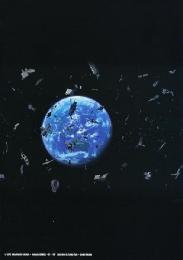
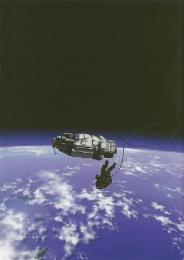
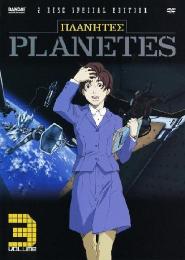
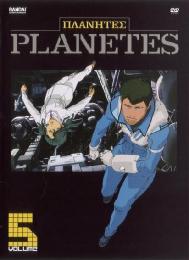
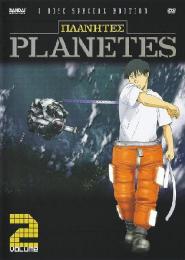

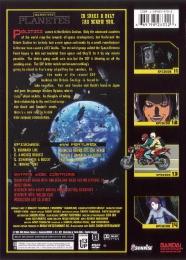
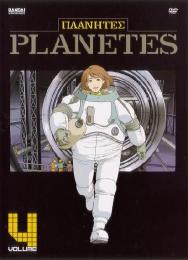
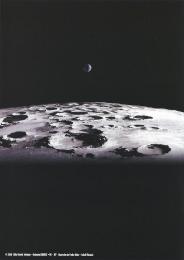
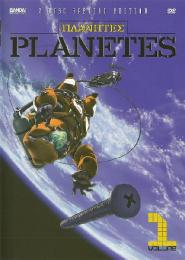
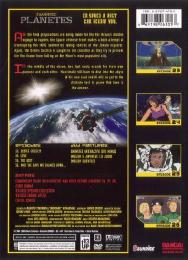
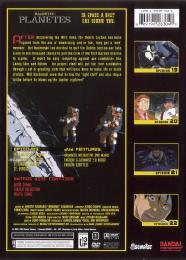
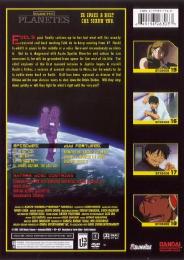

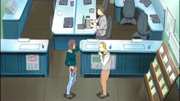
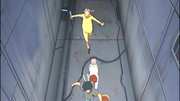

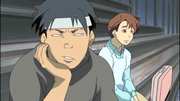


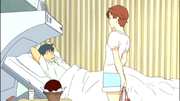

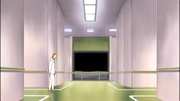
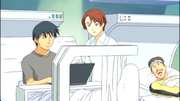


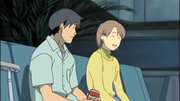
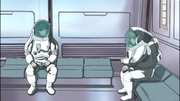
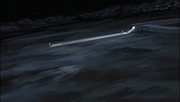


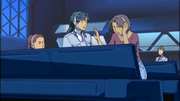



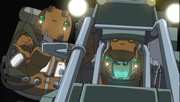

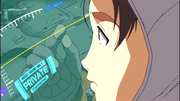


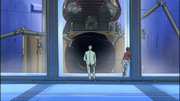
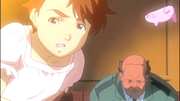
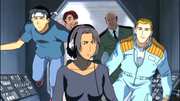

































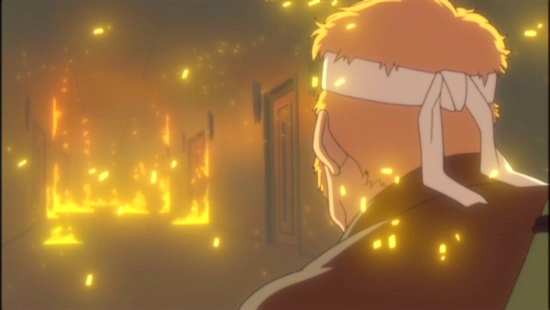











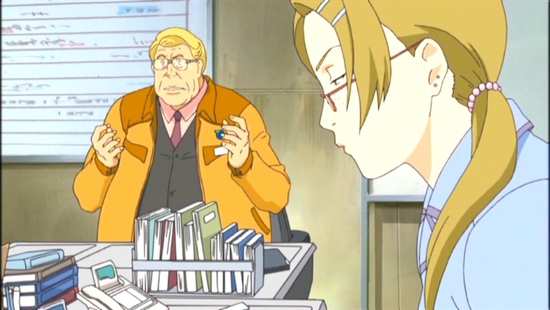

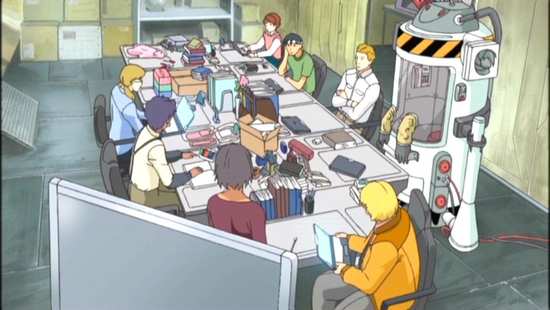
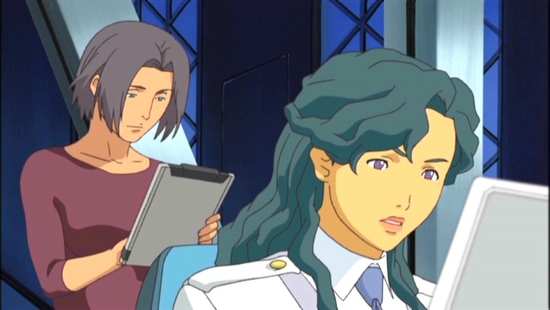


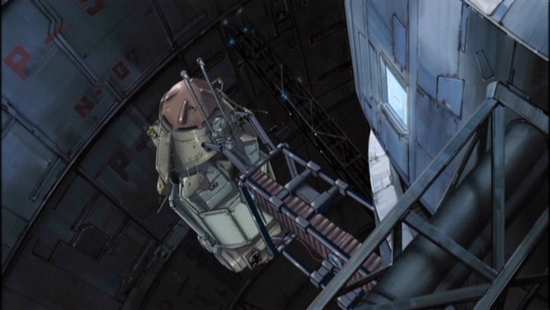
Your Opinions and Comments
Be the first to post a comment!